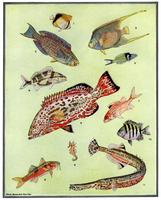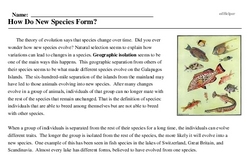How Do New Species Form?
The theory of evolution says that species change over time. Did you ever wonder how new species evolve? Natural selection seems to explain how variations can lead to changes in a species. Geographic isolation seems to be one of the main ways this happens. This geographic separation from others of their species seems to be what made different species evolve on the Galapagos Islands. The six-hundred-mile separation of the islands from the mainland may have led to those animals evolving into new species. After many changes evolve in a group of animals, individuals of that group can no longer mate with the rest of the species that remain unchanged. That is the definition of species: individuals that are able to breed among themselves but are not able to breed with other species.
When a group of individuals is separated from the rest of their species for a long time, the individuals can evolve different traits. The longer the group is isolated from the rest of the species, the more likely it will evolve into a new species. One example of this has been seen in fish species in the lakes of Switzerland, Great Britain, and Scandinavia. Almost every lake has different forms, believed to have evolved from one species.
Groups of living things can become separated in different ways. Rivers can change their course. Volcanoes and mountain ranges form. New islands are created. Ocean waves can carry small groups many miles away and put them down in a new place. This is believed to be how many animals got to the Galapagos Islands.




